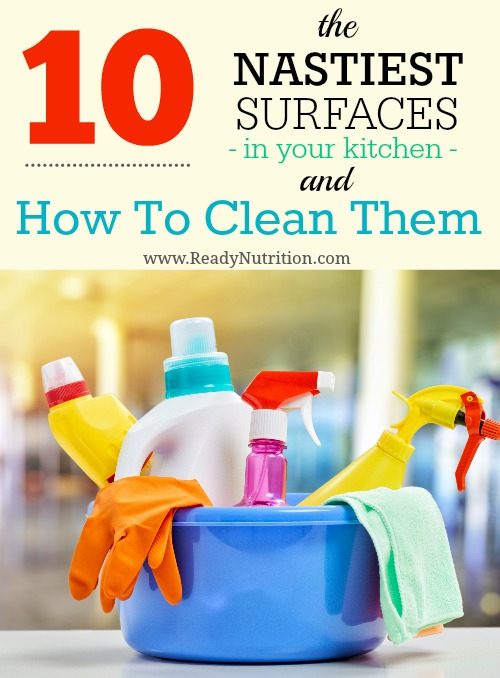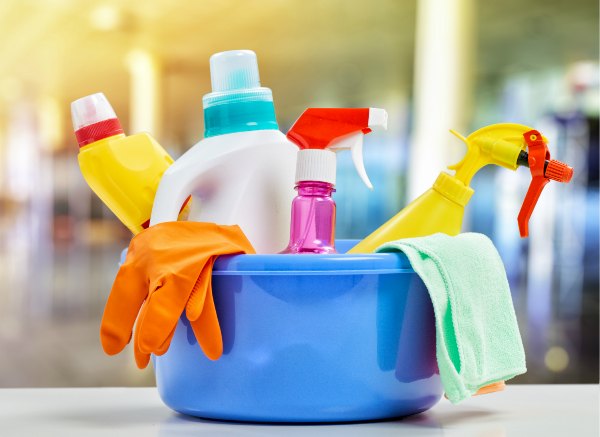Food-borne illnesses are becoming more common. In fact, CDC estimates that each year roughly 1 in 6 Americans (or 48 million people) get sick, 128,000 are hospitalized, and 3,000 die of foodborne diseases. Food poisoning is also referred to as foodborne illness, and it can be defined as any illness arising from the eating of food contaminated by disease, poisons, or chemical toxins (naturally found or man-made). Foodborne illness is a very broad category that encompasses many causes. The information presented here will cover those foodborne illnesses caused by disease-producing organisms, such as bacteria and viruses. The reason for this is that there are too many chemicals to delve into illness caused by toxins whose specificity would call for exact chemical composition in order to effectively render first aid.
While there are different types of food-borne pathogens, the most common include E. coli, salmonella, shigella, campylobacter, norovirus, and hepatitis-A and they are residing on your favorite kitchen surfaces at this very moment. Many of you may be thinking, “Not in my house!” But after reading this article, you may need to take a second glance. In fact, there are ten nasty surfaces in your kitchen that need a good cleaning to prevent infection, and we’ll help you get them cleaned!
The 10 Nastiest Surfaces In Your Kitchen & How To Clean Them
1. Ice CubeTrays
Who would have thought ice trays were so nasty? You can tell the trays need a good deep cleaning if your ice cubes have started to taste a little funny. The reason your ice will taste strange is that the cubes have absorbed the odors of frozen food in your freezer. You can get rid of both germs and absorbed odors easily by using either vinegar or baking soda solution. Try to clean the trays after each use.
2. Cutting boards
A trick is to have two cutting boards. One for meat and the other for fruit and vegetables. Or have color-coded cutting boards: Green – Vegetables, Red – Beef, Yellow – Chicken, White – Pork, etc. Either way, you run the risk of foodborne illness if you fail to clean your cutting boards properly between uses. To prevent infection, use hot soapy water and a dishcloth to clean wood and plastic cutting boards. The mechanical action of using a dishcloth is also important to help remove microbial contamination. To sanitize, soak the cutting board in a mixture of 1 tablespoon of liquid bleach to one gallon of water for one to three minutes.
3. Sponges
Sponges get incredibly nasty from so much use. Replace your sponges once a week, or if you prefer to be more sustainable, use the microwave to kill those germs. The microwave is very effective at killing germs; some reports even say it can zap 99.9% of germs! To clean your sponge in the microwave, saturate it in water first. (Use1/4 cup for scrub sponges and 1/2 cup for cellulose), then heat the sponge on high for one minute (scrub) or two minutes (cellulose).
4. Knife blocks
Wooden knife blocks, in particular, harbor yeast and mold especially if you put semi-wet knives back into the block after washing them. To clean the knife block, remove the knives and wash it well with soap and water. You should also scrub all of the slots with a narrow brush or pipe cleaner. Then, submerge the block in water containing one tablespoon of bleach to each gallon of water (or wipe it with a similarly portioned mixture). Let the block air dry upside-down so it gets sanitized before putting the knives back in it.
5. Countertops
This one’s a no brainer! Even if we use cutting boards, a little raw chicken juice or other bits of food can be left behind. A quick wipe down isn’t enough to kill all the germs living on our kitchen counters! Disinfect your countertops daily and let them air dry. Consider installing a nonporous countertop material like engineered quartz to reduce germ accumulation. And don’t forget to wipe the sides of the countertops too.
6. Sink
Sinks require daily care to fight illness-causing bacteria. Disinfecting them regularly will reduce the risk of contaminating foods and dishware, and will make your sink less appealing to pests. Flush sink drains weekly or bi-weekly with hot water and bleach, or vinegar and baking soda. And disinfect your sink basin every night. If your sink is slow to drain or produces a smell, it might help to connect with a local plumber.
7. Refrigerator
Your refrigerator harbors bacteria in some surprising places. Ice and water dispensers, vegetable crispers, meat drawers, and door seals are some of the germiest spots. You will want to regularly disinfect all of these areas and do a “deep clean” of the entire fridge a few times a year. To clean your refrigerator, you’ll want to use a disinfectant. Do a white vinegar flush of the water dispenser, and clean and sanitize the ice maker and ice bin. If your fridge needs extra care and your budget allows it, consider hiring a cleaning service that offers appliance cleaning.
8. Countertop appliances
Anything left out on the counter regularly can collect bacteria and germs. Your appliances will need more intensive cleaning than you might think. In my case, this is my coffee grinder. I grind whole coffee beans daily and have the grinder just sitting in the corner of the kitchen. Make sure to clean and disinfect any appliances left out. In fact, not doing things like flushing your coffee maker with vinegar and disinfecting your blender gasket can put you at risk of ingesting unsafe bacteria.
9. Cooking utensils
Utensils like rubber spatulas and can openers rank in the top 10 for bacteria content. Studies have even found harmful strains like E. coli and Salmonella on them! If your utensils can be disassembled, take them apart to clean them (bacteria gathers in the creases). And deep clean your can opener in a vinegar bath. If you have a disinfectant heat cycle on your dishwasher, be sure to use that every time you do a load!
10. Reusable Containers/Shopping bags
Food storage containers and reusable grocery bags are the way to go if you want to live a more eco-friendly and sustainable lifestyle. But they aren’t just storing dry goods or tomorrow’s lunch — they’re also holding germs! This is especially true if there is a rubber seal involved, as these tested positive for yeast and mold. To clean your shopping bags, wash them weekly after your grocery shopping outing. Clean all food-storage containers as soon as you’re finished with them, removing the seals for their own cleaning.
*DISCLAIMER: When you are disinfecting areas in the kitchen, please use common sense. Bacteria can spread anywhere so it’s important to wash your hands and kitchen surfaces before and after preparing your food. Bacteria can also spread from one surface to another without you knowing it and if the bacteria get into food, they can cause foodborne illnesses.
Related Articles:
10 Dirty Surfaces in the Home and How To Clean For This Year’s Flu
Cleaning Products May Alter Children’s Gut Bacteria and Lead to Obesity, Study Suggests
10 Household Products You Never Have To Buy Again {With Shopping List}

This article was originally published at Ready Nutrition™ on November 21st, 2019







